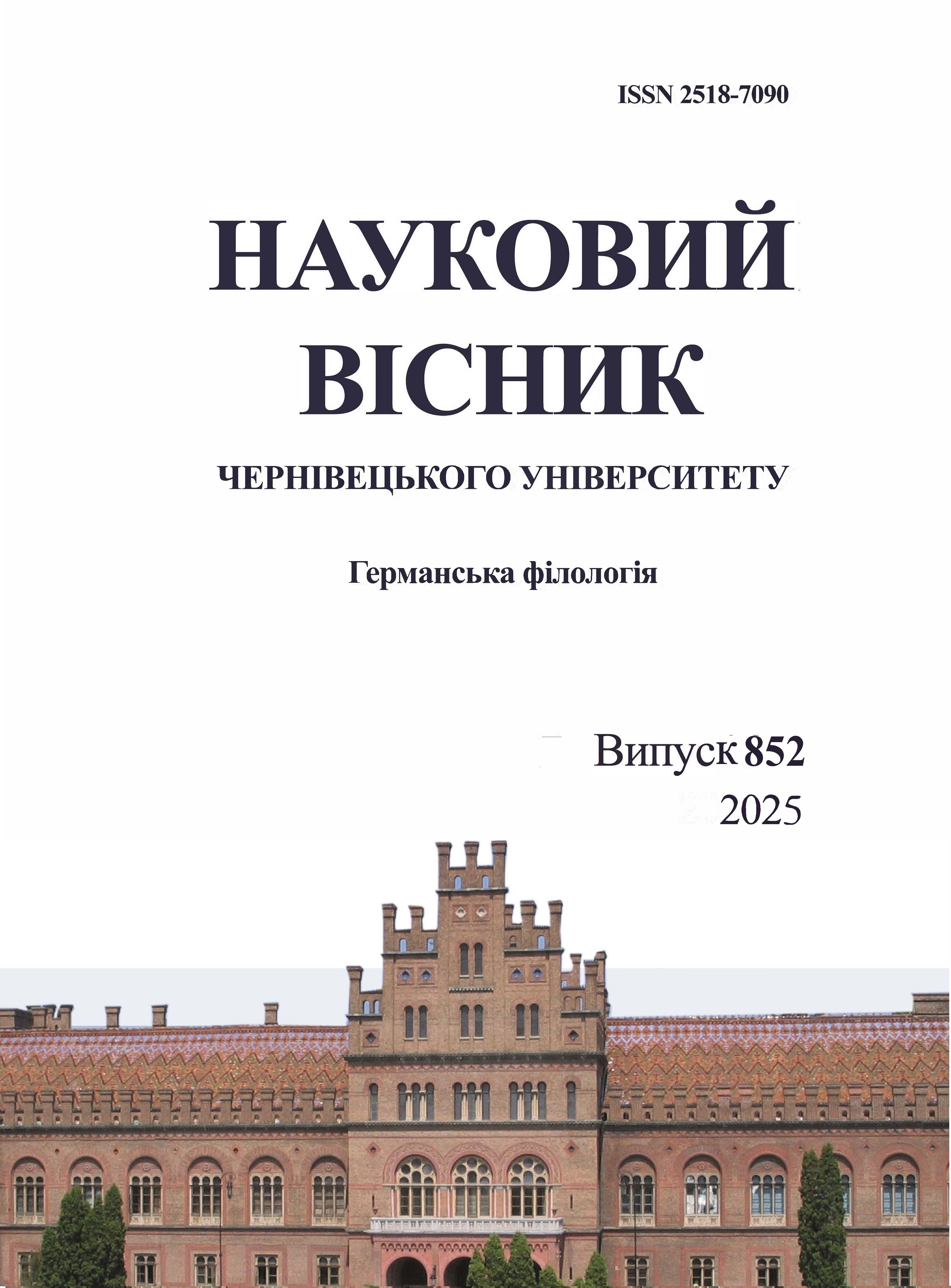EXAMINATION OF TELICITY IN LANGUAGE ACQUISITION AND TRANSLATION
DOI:
https://doi.org/10.31861/gph2025.852.163-171Keywords:
aspectual marking, telicity, language acquisition, cross-linguistic differences, translation studiesAbstract
This paper examines the phenomenon of telicity, or goal-orientedness of events, in language acquisition and translation, focusing on the cross-linguistic differences between Ukrainian and English. The study explores how these distinctions influence first (L1) and second (L2) language acquisition and affect translation accuracy and processing. The research highlights two primary methods of telicity marking: English employs a compositional system dependent on direct object properties, whereas Ukrainian, like other Slavic languages, uses morphological markers such as perfective prefixes. Findings from first language acquisition studies suggest that predicate-based telicity systems, as found in Ukrainian, facilitate earlier and more accurate acquisition due to their explicit morphological encoding. Conversely, languages that mark telicity compositionally, such as English, require learners to integrate multiple linguistic components, resulting in a more protracted acquisition process. Second language acquisition research reveals that L2 learners of English from languages without a determiner system often struggle with compositional telicity but show improvement with proficiency. Similarly, English-speaking Ukrainian learners initially rely on their L1 mechanisms but eventually acquire predicate telicity marking as their proficiency increases.
These findings hold significant implications for translation studies. The inherent structural differences in telicity marking between English and Ukrainian can lead to translation challenges, particularly regarding aspectual nuances. Professional translators must be aware of these linguistic contrasts to ensure accurate cross-linguistic interpretation of event structures. Ultimately, this study underscores the role of telicity in shaping cognitive and linguistic processes, highlighting its relevance for both theoretical linguistics and applied translation studies.
Downloads
References
REFERENCES
Brown, R. (1973). A first language: The early stages. Harvard University Press.
Bybee, J. L. (1985). Morphology: A study of the relation between meaning and form. Amsterdam: John Benjamins.
Folli, R., & Harley, H. (2006). What language says about the psychology of events. Trends in Cognitive Sciences, 10(3), 91-92.
Ionin, T., & Zubizarreta, M. L. (2010). Introduction to the special issue: Selective first language influence and retreat from negative transfer. Second Language Research, 26(3), 283-291. doi: 10.1177/0267658310365767
Jackendoff, R. (1996). The proper treatment of measuring out, telicity and perhaps even quantification in English. Natural Language and Linguistic Theory, 14, 305–354.
Kaku, K., Liceras, J. M., & Kazanina, N. (2008). There is hope for Japanese learners of English: The case of telicity. Paper presented at the 32nd Annual Boston University Conference on Language Development, Somerville, MA.
Krifka, M. (1998). The origins of telicity. In S. Rothstein (Ed.), Events and grammar (pp. 197–235). Dordrecht: Kluwer.
Maratsos, M. P. (1976). The use of definite and indefinite reference in young children: An experimental study of semantic acquisition. Cambridge University Press
Odlin, T. (1989). Language transfer: Cross-linguistic influence in language learning. Cambridge: Cambridge University Press.
Roberts, L. (2012). Psycholinguistic techniques and resources in second language acquisition research. Second Language Research, 28(1), 113-127.
Schwartz, B., & Sprouse, R. (1996). L2 cognitive states and the Full Transfer/Full Access model Second Language Research, 12, 40–72.
Slabakova, R. (1997). Bulgarian preverbs: Aspect in phrase structure. Linguistics, 35, 673–704.
Slabakova, R. (2000). L1 transfer revisited: The L2 acquisition of telicity marking in English by Spanish and Bulgarian native speakers. Linguistics, 38, 739–770.
Slabakova, R. (2001). Telicity in the second language. Amsterdam: John Benjamins.
Slabakova, R. (2005 ). What is so difficult about telicity marking in L2 Russian? Bilingualism: Language and Cognition, 8, 63–77.
Slabakova, R. (2008). Meaning in the second language. Berlin: Mouton de Gruyter.
Slobin, D. I. (2013). Crosslinguistic evidence for the language-making capacity. In The crosslinguistic study of language acquisition (pp. 1157-1256). Psychology Press.
Smith, C. (1991). The parameter of aspect. Dordrecht: Kluwer.
van Hout, A. (2007). Acquiring telicity crosslinguistically: On the acquisition of telicity entailments associated with transitivity. In M. Bowerman & P. Brown (Eds.), Crosslinguistic perspectives on argument structure: Implications for learnability (pp. 255–278). Hillsdale, NJ: Lawrence Erlbaum.
Vendler, Z. (1967). Linguistics and philosophy. Ithaca, NY: Cornell University Press.
Verkuyl, H. (1972). On the compositional nature of the aspects. Dordrecht: Reidel.
Verkuyl, H. (1993). A theory of aspectuality: The interaction between temporal and atemporal structure. Cambridge: Cambridge University Press.






